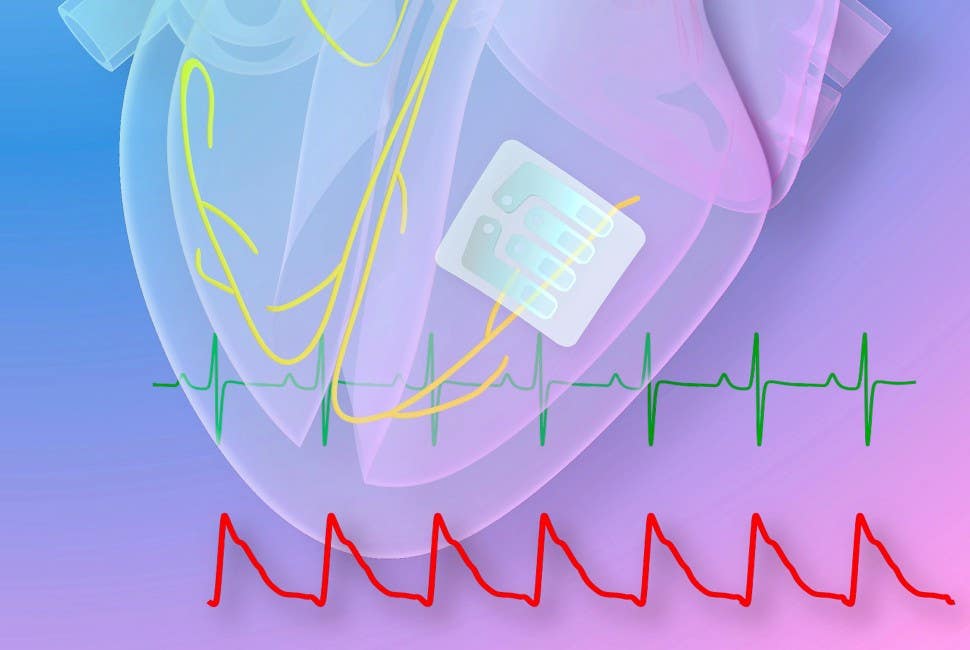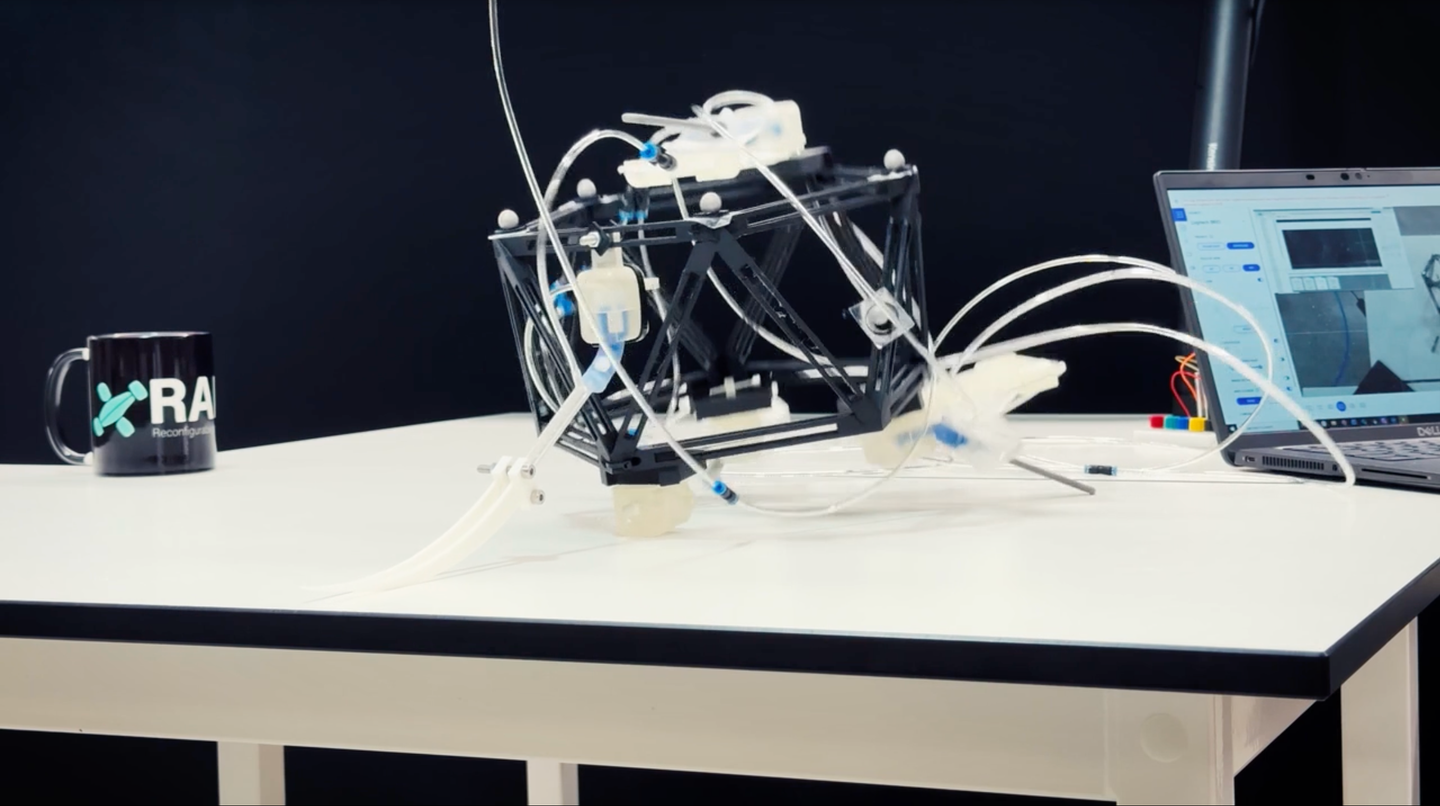Graphene ‘tattoo’ revolutionizes treatment of heart conditions
Northwestern University and the University of Texas at Austin (UT) have jointly created the first graphene-based cardiac implant.

[Apr. 20, 2023: Staff Writer, The Brighter Side of News]
Illustration of the graphene tattoo on a human heart. (CREDIT: Zexu Lin/Northwestern University)
Northwestern University and the University of Texas at Austin (UT) have jointly created the first graphene-based cardiac implant. The device, which resembles a child's temporary tattoo, is thinner than a hair and behaves like a traditional pacemaker. However, the graphene "tattoo" melds softly to the heart, and it is stretchy and strong enough to withstand the heart's movements while conforming to its contours.
Optically transparent, the researchers can use an external source of optical light to stimulate the heart. By implanting the device into a rat, the researchers demonstrated that it could detect and correct irregular heartbeats without compromising the heart's natural motions. The results of their study will be published in the Advanced Materials journal.
Heart rhythm disorders and the existing treatment
Heart rhythm disorders, also known as cardiac arrhythmias, occur when the heart beats too fast or too slow. While some cases are not serious, others can lead to heart failure, stroke, and even sudden death. In the United States alone, complications related to arrhythmia result in the loss of 300,000 lives each year.
Physicians commonly treat arrhythmia using implantable pacemakers and defibrillators that detect irregular heartbeats and correct the rhythm by stimulating it electrically. While these devices can be lifesaving, their rigid nature may impede the heart's natural movements, injure soft tissues, cause temporary discomfort, and lead to complications such as painful swelling, perforations, blood clots, and infection.
Related Stories:
Development of a bio-compatible implant
Keeping these challenges in mind, Northwestern University's Igor Efimov, a professor of biomedical engineering at the McCormick School of Engineering, and professor of medicine at the Northwestern University Feinberg School of Medicine, and his team aimed to develop a bio-compatible device that could conform to soft and dynamic tissues.
The researchers settled on graphene, an atomically thin form of carbon, after reviewing multiple materials. Graphene has potential for many applications in high-performance electronics, high-strength materials, and energy devices because of its ultra-strong, lightweight structure and superior conductivity.
The GETs and the researchers' new application
Dimitry Kireev and Deji Akinwande of the University of Texas were already developing graphene electronic tattoos (GETs) with sensing capabilities. Their team's e-tattoos adhere to the skin to continuously monitor the body's vital signs, including blood pressure and the electrical activity of the brain, heart, and muscles. Efimov's team, however, had to come up with a new method to use the devices inside the body, directly onto the surface of the heart.
Graphene tattoo in solution. (CREDIT: Ning Liu/University of Texas at Austin)
Efimov's team developed an entirely new technique to encase the graphene tattoo and attach it to the surface of a beating heart. They first encapsulated the graphene inside a flexible, elastic silicone membrane - with a hole punched in it to provide access to the interior graphene electrode.
They then gently placed a layer of gold tape with a thickness of ten microns onto the encapsulating layer, which served as an electrical interconnect between the graphene and the external electronics used to measure and stimulate the heart. Finally, they placed it onto the heart, and the entire thickness of all layers together measured approximately 100 microns in total.
Graphene implant on tattoo paper. (CREDIT: Ning Liu/University of Texas at Austin)
The resulting device remained stable for 60 days on an actively beating heart at body temperature, which is comparable to the duration of temporary pacemakers used as bridges to permanent pacemakers or rhythm management after surgery or other therapies.
Leveraging the transparent nature of the device, Efimov and his team performed optocardiography during the animal study using light to track and modulate heart rhythm. This approach provides a new way to diagnose and treat heart ailments while also opening new possibilities for optogenetics.
As the team continued their research, they found that optocardiography could be used to selectively stimulate specific regions of the heart, opening up new possibilities for optogenetics research. By using light to control the activity of specific cells in the heart, they could better understand the underlying mechanisms of heart disease and potentially develop new therapies.
Graphene implant on tattoo paper. (CREDIT: Ning Liu/University of Texas at Austin)
Efimov and his team also found that optocardiography could be used to identify heart abnormalities that would not be visible through traditional imaging techniques. This could lead to earlier and more accurate diagnoses of heart disease, which could improve patient outcomes and potentially save lives.
The team's research was met with great enthusiasm by the scientific community, and many researchers around the world began incorporating optocardiography into their own studies. Efimov and his team continued to refine their technique, and eventually, they were able to demonstrate its effectiveness in human patients.
Today, optocardiography is a widely used diagnostic tool for heart disease, and optogenetics research is advancing rapidly thanks to the insights provided by this innovative approach. Efimov and his team continue to push the boundaries of what is possible with this technology, and the future looks bright for both optocardiography and optogenetics research.
Note: Materials provided above by the The Brighter Side of News. Content may be edited for style and length.
Like these kind of feel good stories? Get the Brighter Side of News' newsletter.



